Cabin tents are the most popular type of family camping tent. The vertical walls mean you get lots of headroom. They come in many different sizes and there are instant cabin tents available for quick setup.
click t
If you aren’t sure if a cabin tent is right for your family, see this post about the different types of tents and their pros/cons. If you are sure you want a cabin tent, I’ve chosen the best ones below. There should be a good cabin tent here for all types of family camping. 🙂
Quick Picks
- Best overall: Eureka! Copper Canyon LX (6P, 8P or 12P)
- Runner up: Core 9P Instant Tent
- Best for backpacking and bad weather: Eureka! Space Camp 6P
- Best for large families: Core 12P Instant Tent
- Best on a budget: Coleman 6P Instant Cabin Tent
Comparison Table
Best Cabin Tents for Family Camping
Eureka! Copper Canyon LX Tent
Best for: Overall best family tent because usability and weather resistance.
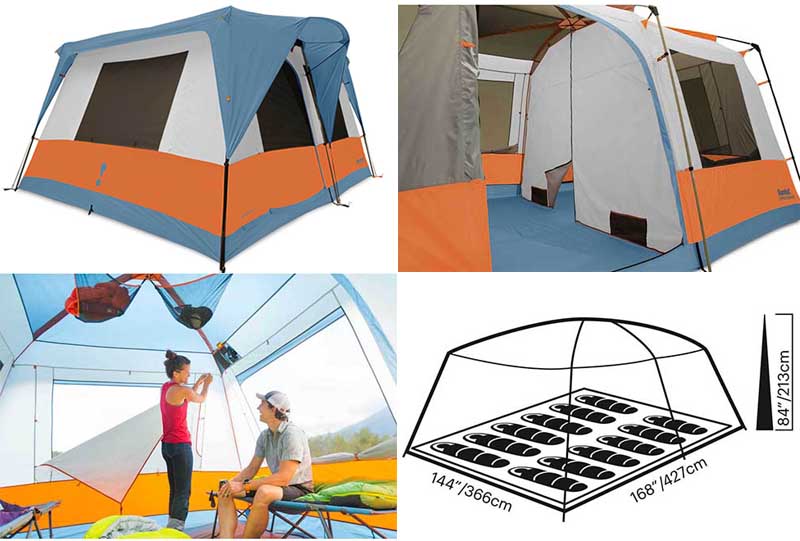
Features
- Sleeps: 12 (6P and 8p sizes available)
- Rooms: 2 with removable divider
- Footprint size: 14×12 feet
- Max height: 84 inches
- Weight: 36lbs 13oz
- Buy Here
Review
The Eureka! Copper Canyon tent has some really nice extra features like an Eport and lots of interior storage. The large mesh windows are also great: leave them open and you’ll get plenty of light and ventilation in the tent.
Setting up the tent is actually pretty simple. There are clips instead of sleeves, so poles go through easily. It’s even possible for one person to get the tent up alone, though an extra set of hands will make it faster.
Compared to other cabin family tents, the Coppery Canyon does handle rain well. The fly overhangs the windows to prevent leaks. However, there are no vents, so it gets steamy inside with the windows completely up. The floor material is very thin, so some rain may leak through. I’d recommend using this tent with a groundsheet to prevent that – which means one more thing to pack. Luckily the tent is actually pretty lightweight at 22-37lbs depending on the size.
Pros
- Massive doors
- Lots of light and ventilation with windows open
- Fast and easy setup
- Lots of headroom
Cons
- Somewhat pricy
- Needs groundsheet in rain
- No vents
Coleman Instant Dark Room Cabin Tent
Best for: Camping under the hot sun and daytime napping
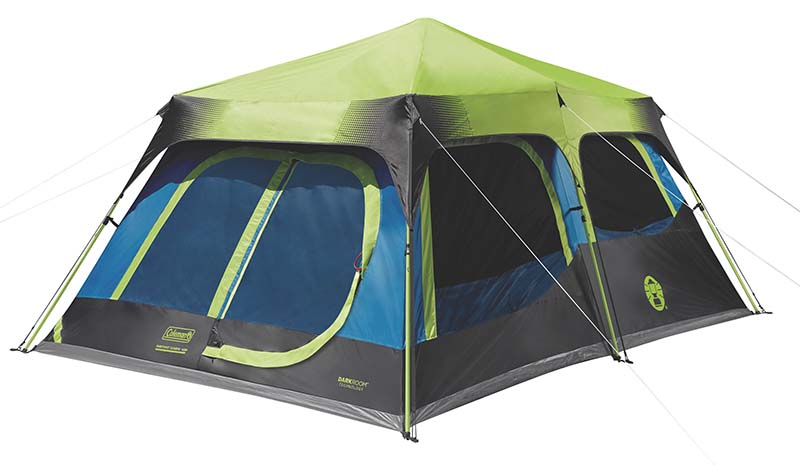
Features
- Sleeps: 10
- Rooms: 2 with removable divider
- Footprint size: 14×10 feet
- Max height: 79 inches
- Weight: 35.5lbs
- Buy Here
Review
The Coleman Dark Room tents are designed for camping in sunny weather. The material blocks sun so you can sleep in later – or your baby can take a nap inside. Unlike other dark tents, the Coleman tent also blocks heat so it doesn’t turn into a sauna.
Setup is incredibly easy with the tent. The tent is pre-attached to the poles it really only takes a minute or two to get the tent up. There are some other nice features of the tent for families too, like lots of storage and a removable divider to make two rooms. The door is hinged, which is easy for getting in/out.
The 10P version of the tent has two doors: one in front and one in the back. This means you can actually have 10 people sleeping in it without everyone stepping on each other.
The major downside is that the tent sucks in heavy rains. It doesn’t look like the seams are sealed very well on the rain fly or tent. You could seal them yourself though to make it more rainproof or just pitch under a tarp shelter for additional protection.
*Coleman makes other sizes of their instant tents but currently only the 10P tent has the Dark Room feature.
Pros
- Instant setup
- Blocks light and heat
- Hinged door
- Front and back entry doors
Cons
- Door zippers snag
- Leakage issues in heavy rain
Coleman 6P Instant Cabin Tent
Best for: First family tent, entry-level summer camping
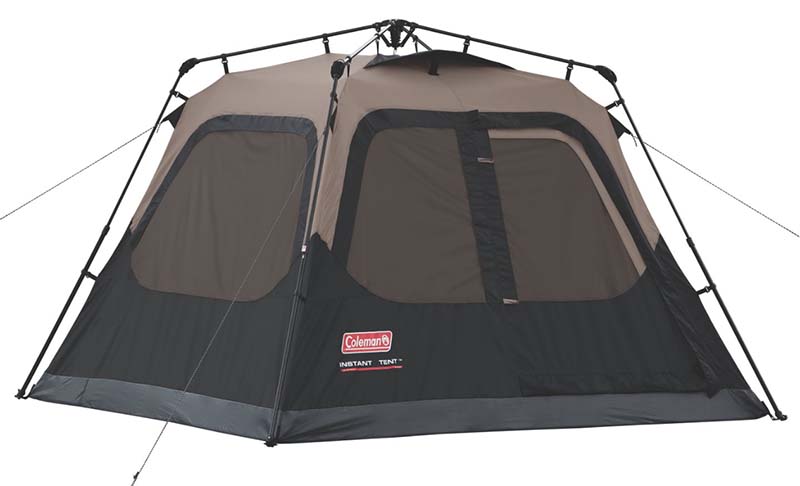
Features
- Sleeps: 6 (4p size also available)
- Rooms: 1
- Footprint size: 10×9 feet
- Max height: 72 inches
- Weight: 24lbs
- Buy Here
Review
This classic Colman family tent is a smaller version of the 10P Dark Room tent. It also has instant setup. There is no rain fly because the tent material is waterproof.
As with any single-wall tent, the Instant Cabin has really bad ventilation. There is a roof vent on top and you can open up the massive windows to reduce condensation. However, you’ll need to keep the windows closed in the rain so condensation is almost inevitable.
Pros
- Instant setup
- Affordable
Cons
- Only one room
- Condensation in bad weather
Core 9 Instant Cabin Tent
Best for: If you want a mosquito-proof screen room to hang out in
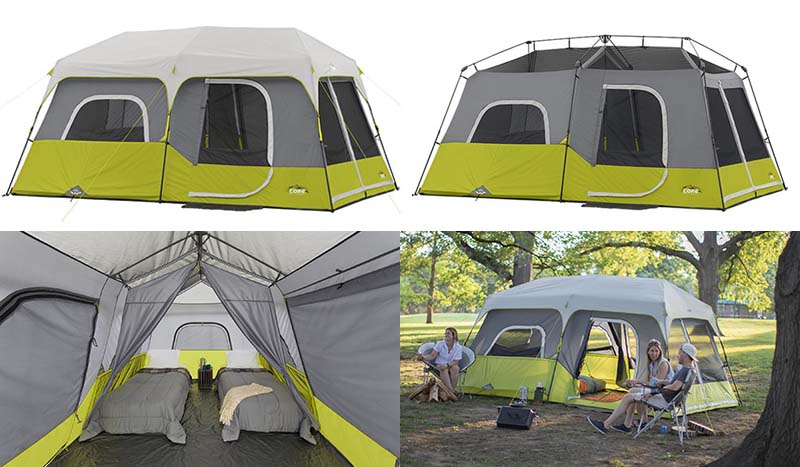
Features
- Sleeps: 9
- Rooms: 2 with removable divider
- Footprint size: 14×9 feet
- Max height: 78 inches
- Weight: 30.5lbs
- Buy Here
Review
I love the design of this 9P tent by Core. It gives you a sleeping area in the back with a draw-back divider. The front room can be used as a screened porch. You’ll like hanging out there at dusk when the mosquitoes come out. You could also use the screen room as a separate sleeping area, but the two doors are located here. You’ll have to climb over each other getting in/out.
Putting the tent up is almost instant. It has telescoping poles and an intuitive frame. Once the frame is together, you just clip the tent in place.
The other cool design feature of the Core 9P family tent is that there are vents on the ground. These really help with airflow when you have the windows rolled up. The roof is mesh, so you don’t get as much condensation as with other cabin tents. This makes it a better pick for cold and rainy weather.
The tent seems to handle rain very well. The rain fly extends over the windows a bit so you can leave them slightly open for ventilation in light rains. If the weather will get really bad, you’ll want a groundsheet under the tent.
An annoying thing about the tent is that there aren’t any tie-ups for the windows. When you unzip them, they just hang there – which may be in your face depending on where you sleep. There’s also no way you will comfortably get 9 people in this tent. It’s better for 4-5 people and use the front room as a porch for hanging out and gear.
*Core also makes a larger 10P version of this tent with more headroom, but it isn’t an instant tent.
Pros
- Good ventilation
- Handles rain well
- Instant setup
- Large doors
- Sturdy construction
Cons
- Small footprint for 9P tent
- Windows don’t have tie-ups
Core 12 Person Instant Cabin Tent
Best for: Large families who need three rooms
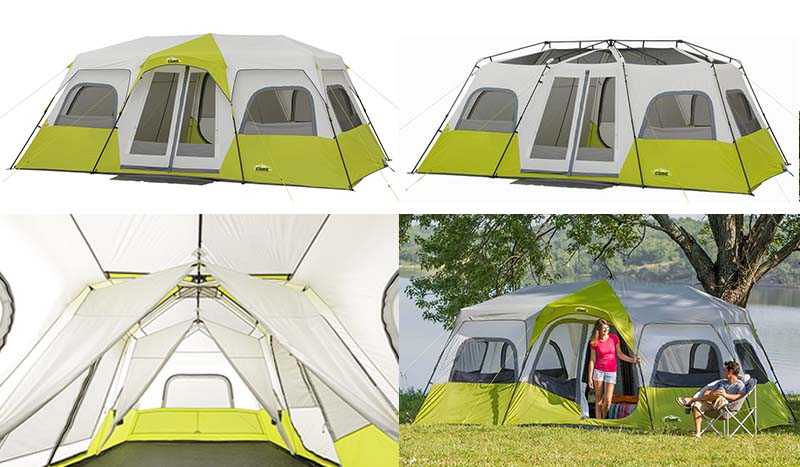
Features
- Sleeps: 12
- Rooms: 3 with removable divider
- Footprint size: 18×10 feet
- Max height: 80 inches
- Weight: 52lbs
- Buy Here
Review
If you need a very large 3-room family tent, this is one of the best options (and it’s budget-friendly). The tent has a central entranceway with a door on each side. There are two room dividers which go up to make a total of three rooms. The tent sets up very quickly.
You could theoretically fit 12 people in this tent. But the people sleeping on the side rooms would have to crawl over the people in the middle room to get in/out. I wish they would have put a door at each side so you could enter or exit without crossing the center room. As it is, the center room is best for hanging out or gear storage and not for sleeping.
As with most other Core tents, there are floor vents. These really do help with condensation when camping in cold weather. The tent withstands rain fairly well – but the seams will eventually start to leak. Be prepared to re-seal the seams after using the tent for a season or two. I also wish the rain fly extended over the windows more.
Pros
- Two large entranceways
- Three separate rooms
- Floor vents prevent condensation
- Affordable for size
Cons
- Windows may leak in heavy rain
- Will need to re-seal seams fairly quickly
- Insanely heavy
Big Agnes Big House 6P Cabin Tent
Best for: Tall people, camping or backpacking in bad weather
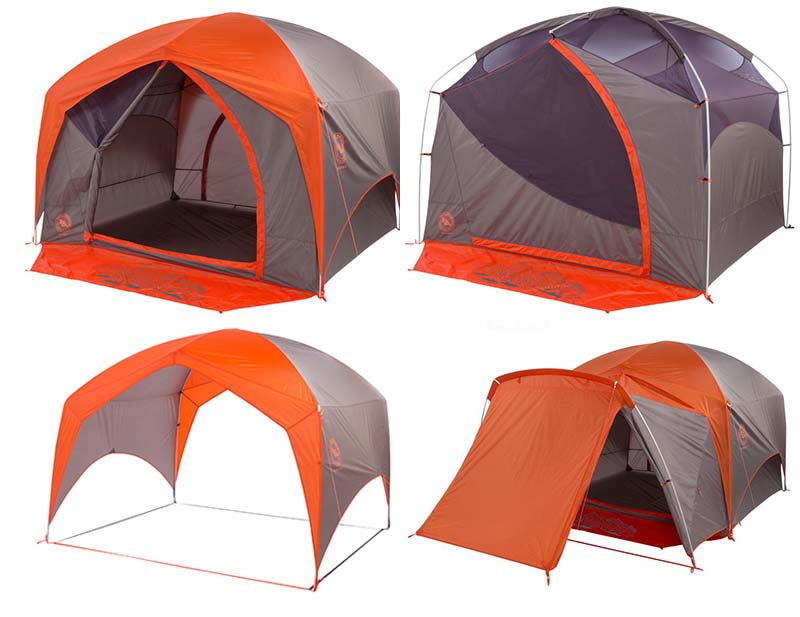
Features
- Sleeps: 6
- Rooms: 1
- Footprint size: 118×100 inches
- Max height: 81 inches
- Weight: 16.4lbs
- Buy Here
Review
I love the Big House 6P tent because it is incredibly versatile. It serves very well as a family cabin tent that fits up to 6 people (realistically, 2-3 adults and 2-3 kids or dogs). You can also set up the rain fly by itself to use as a shade shelter. If you need more space, there is an optional vestibule (sold separately) that connects to the front of the tent.
As you’d expect from Big Agnes, the tent withstands bad weather really well. The rain fly actually extends far down the side of the tent so no leakage occurs. There are flaps over the zippers to keep rain from getting through. The seams are sealed very well so you won’t have to reseal them anytime soon.
Because there are just two and a half poles, the cabin tent is stupidly easy to set up. You just slide the poles through the small sleeves and then clip in place. The only real downside is that there aren’t any windows to look out and it gets dark in the tent.
Pros
- Withstands heavy rains well
- Can use just fly as a shelter
- Optional vestibule for extra space
- Lightweight for size
Cons
- No windows
- Not much light inside tent
Eureka! Space Camp 6P Cabin Tent
Best for: Lightweight family backpacking tent with lots of storage space
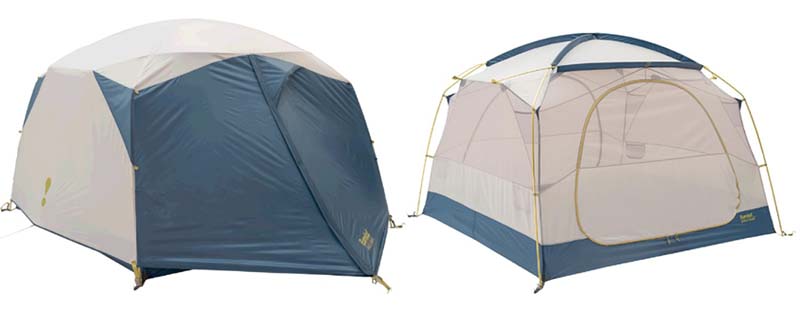
Features
- Sleeps: 6
- Rooms: 1
- Footprint size: 10×8.3 feet
- Max height: 78 inches
- Weight: 16lbs 1oz
- Buy Here
Review
At just 16lbs 1oz, the Eureka Space Camp 6p tent is incredibly lightweight for a cabin tent. It also has better weather protection than most family cabin tents because of the full-coverage rain fly. You don’t have to worry about rain getting into the tent, even if it is windy. There are upper and lower vents built into the tent, so you don’t get condensation issues in cold weather either.
Another nice perk is that there are two doors and two vestibules. Since this isn’t the largest tent, the storage room comes in handy.
Be warned that the Space Camp only has mesh on the inner tent. You can’t zip up these windows. Without the rain fly, you basically get a nice bug tent – but absolutely no privacy. Thus, you really need to use the tent with the rain fly.
Because there are no windows in the fly, you won’t have any views from the tent like you get with most cabin tents. But the windows are where cabin tents tend to leak, so you essentially trade the views for weather protection.
Also note that the floor is pretty thin. Use a groundsheet (not included) in bad weather or rough ground.
Pros
- Two doors and two vestibules
- Excellent ventilation
- Full coverage rain fly
- Lightweight for size
- Vestibule converts to awning
Cons
- Fairly small interior
- Can’t close interior mesh windows
- Thin floor; use groundsheet
- Pricy
Coleman Skylodge Instant Cabin Tent
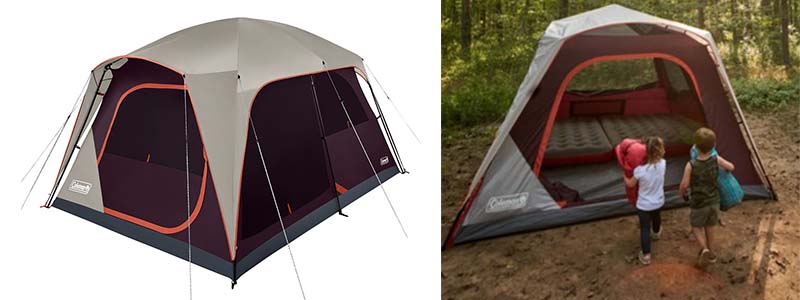
Features
- Sleeps: 8 (6P, 10P and 12P sizes available)
- Rooms: 2 with removable divider
- Footprint size: 12.5×9 feet
- Max height: 77 inches
- Weight: 29.7lbs
- Buy Here
Review
The Skylodge is another really popular tent by Coleman. The standout feature of the tent is that it has floor-to-ceiling windows. You can really enjoy hanging out inside the tent during the day because of all the light and ventilation you get.
These windows do mean a risk of leaking during heavy rains. However, the Skylodge does seem to handle rain fairly well without leaks. The bathtub floor is very deep so you don’t even need a groundsheet with it. However, it does flap around a lot in wind. You’ll only want to use this as a summer tent.
There is a removable divider for making two rooms (the 6P version doesn’t have this). You only have one door though, so it’s not really practical to have people sleeping in the front room. As you’d expect with Coleman tents, you’ll eventually have to do minor repairs as the construction is somewhat cheap.
Pros
- Great ventilation
- Massive windows
- Color coded tent poles
Cons
- Not great in windy weather
- Only for summer camping
- Need two people to set up
Quick Advice for Buying a Cabin Family Tent
1. How You Will Use the Space?
Do you want to use the entire tent for sleeping? There better be seperate rooms and a doorway for each.
Do you want to use one room as a porch? Then look for two-room cabin tents with dividers that are sewn in. Clips will let bugs into your tent!
Do you need versatility? Some cabin tents can be used fly-only as a shelter, or have optional vestibules for extra space.
2. Ventilation Matters
When the temperatures drop at night, the temperature inside the tent will be warmer than outside. This causes condensation, which can drip down and make everything wet. Good cabin tents have built-in vents that can stay open even in the rain.
Read more about tent condensation in this post about How much warmer is it inside a tent?
3. Measure Your Air Mattresses!
If you want to fit air mattresses in a cabin tent, then you need to do some math. Calculate how much space your mattresses will take up in different configurations. Will they fit in the tent? Will you still have walking space around the mattress?
You’d be surprised. Some massive cabin tents can only hold one queen size air mattress because of their layouts.
4. Will It Leak?
One of the major downsides of cabin tents is that they perform poorly in bad weather. They rarely have full-coverage rainflies. The exposed windows are prone to leaking. Vertical walls mean wind blasts right against them, so they don’t hold up well in open mountain areas or during storms.
On top of that, a lot of cabin tents are cheaply made. The seams eventually open up, allowing water to drip through. You may want to pack some tent seam sealer in case of leaks.
5. Larger Isn’t Always Better
An 8 person cabin tent realistically won’t fit eight people comfortably. So you will need to get a larger tent than your group size. However, you might not want to get a massive tent.
If the tent is too high, short people won’t be able to set it up or get the rain fly on easily.
The larger the tent, the bigger space you need to pitch – not always possible on rocky ground.
So be aware of the tradeoffs which come with large cabin tents.


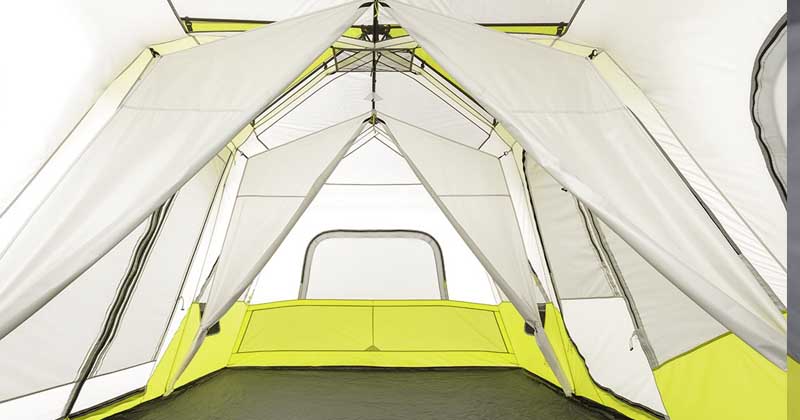
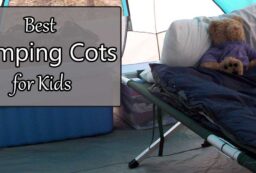
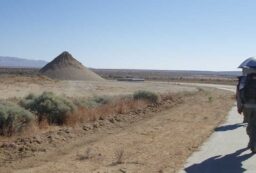
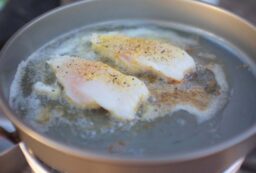







Post your comments